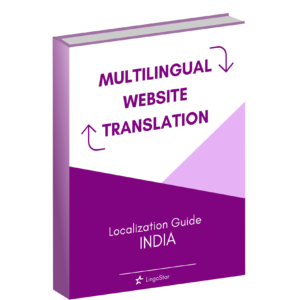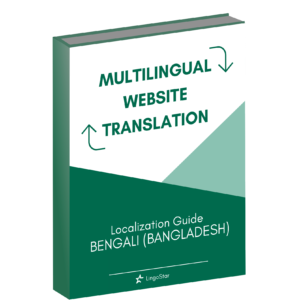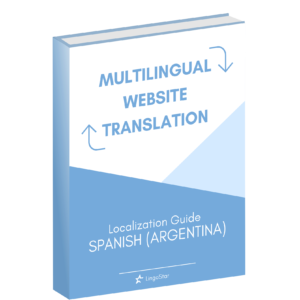Oct 27, 2009 | Translation News
Dear Language Friend, Over the last couple of months we have uncovered many different aspects of a language to our readers. We informed you about the origins of different languages, the structures, cultural differences and many other aspects of the most common form of communication. This month we will go back to one of the things we all learned shortly after birth – nonverbal communication. Contributed by Christine Mueller. Thanks for reading. Talking without speaking Without always being aware of it, we are communicating every second and every minute of our lives. Although we usually associate communication with speech, voice and words there are in fact two forms of communication – verbal and nonverbal. To communicate nonverbally is probably the oldest form of human communication and basically means to use facial expressions, body movements or gestures to express feelings and send out information or messages to other people. Usually tears are the signs of sadness; a smile indicates happiness and forehead wrinkles mean sorrow. But facial expression, as one of the most obvious forms of nonverbal communication, is not the only way to reflect our moods or feelings. It is said that it only takes a few seconds for us to decide whether we like a person or not. This is definitely a result of all the signals this person is sending out via other forms of nonverbal communication such as clothes, the choice of color, hair style, tattoos or attitude. We can easily communicate in what way we want to present ourselves to our environment but we cannot entirely hide our feelings. You can not not...
Aug 10, 2009 | Translation News
Dear Language Friend, Always look on the bright side of things In our previous newsletters we went on an adventurous journey with Sir English Language exploring his origin by meeting some mysterious and dangerous tribes. We accompanied our good old friend from Old English valley to Middle English town to the Modern days and, last but not least, we witnessed the birth of the English language’s one millionth word. Congratulations! In this newsletter we would like to take a look at the funny aspect of English language and its expressions. Enjoy our short walk through the wild part of English language and communication. Contributed by Christine Mueller. Thanks for reading. To laugh or not to laugh, that is the question Language can be a source of joy but also of a great confusion. English is spoken in 53 countries around the world and learning the language becomes more and more essential in the days of globalization. However, even an excellent knowledge of the language can sometimes be insufficient; for there is a humorous play of words that can make life difficult for non-native speakers. This is not really a new concept since even the famous and fabulous William Shakespeare took much pleasure in playing with puns. So did Lewis Carroll when sending Alice to Wonderland – an excellent example of puns, inversions, riddles and jokes. Today these literary devices are often used in advertisement where the language games point out ambiguity and slipperiness of languages, and English in particular. The power of puns Pun is a literary device where the same word carries two meanings. There are many types...
Jul 15, 2009 | Translation News
Dear Language Friend, ‘Where Do New Words Come From?’ In our last newsletter we addressed the addition of the English Language’s one millionth word, and consequently its significance. We inquired into what constitutes a word and who is to blame for the rapid expansion of the English Language in recent years, and consequently were left with more questions than answers. As a result, in this month’s edition, I would like to explore the same subject in a different light. This month we will explore where it is all these new words are coming from and why some fail while others soar. Contributed by Kathleen Dodd-Moher. Thanks for reading. Other Languages One of the most prominent sources of new words is borrowing from other languages. English has a long history of sponging words off of other languages. Traditionally, Latin has been made use of as well as French and German from which English speakers have frequently absorbed words. Some examples include: German Angst Kindergarten French Faux pas Je ne sais quoi Latin Pro Bono Bona Fide Acronyms Invented New words also come from short-forming longer existing names. Words such as RADAR (radio detection and ranging), INTERPOL (International Criminal Police Organization) and DNA (deoxyribonucleic acid), once only used as acronyms, have been accepted as genuine words over time. Combining Existing Words Combining words already in circulation is another common source for fresh words. New terms are frequently being invented by: Adding a prefix or suffix. E.g. Teleshopping, Chocoholic Creating a rhyming pair. E.g. Boogie Woogie, Snail-Mail Combining two words creatively. E.g. Twist+Fiddle= Twiddle, Smoke+Fog=Smog Eponyms An eponym, or a proprietary eponym...
Jun 15, 2009 | Translation News
Dear Language Friend, One Millionth Word Added To The English Language In this month of June 2009, we celebrate the addition of the one millionth word to the English Language. The term Web 2.0 was apparently added in the early hours of Wednesday June 10th and inspired a great deal of curiosity as well as debate concerning the state of the English Language and its rapid expansion in recent years. In this issue of our newsletter we will explore the significance of this one millionth word and the questions it engenders. Contributed by Kathleen Dodd-Moher. Thanks for reading. What constitutes a word anyway? The addition of Web 2.0 to the English Language makes us stop and think. How do we define the term word? Do we accept slang words and computer jargon? How widely used does a term need to be before being officially accepted as a word? And do we need to become stricter about accepting words considering how rapidly English is developing, changing and expanding? These are but a few of the questions inspired by this recent news story. Why such a rapid development of the language recently? One of the most relevant issues this news story brings up is the current speed at which the English Language is growing. There are several takes on the topic, but general consensus confirms several influences. First, modern technological development is very much to blame. The invention of the internet, cellular devices, new hard and soft wares have evidently contributed to the creation of new words: words suitable to describe as well as communicate via these new tools. As a...
Jun 15, 2009 | Translation News
Dear Language Friend, Have you ever wondered where the word “bizarre” came from? Well, we hope that you had a nice rest since our last journey into the depths of the English Language history, because we are about to embark on another exciting journey through time. In the last newsletter we already became familiar with our wise and strong travel guide-the distinguished knight – Sir English Language. Last month, our guide has taken us to the very roots of the English Language and showed us the dangers and marvels of the Old English valley. Our previous journey proved to be interesting and breathtaking. However, there is still more places to visit and more things to learn about our beloved English Language. In this newsletter we will continue our journey into the fascinating Middle English town and Early Modern English country. We will meet famous people like Geoffrey Chaucer, William Shakespeare and Samuel Johnson. And so the journey begins… Contributed by Kristina Bobrova. Thanks for reading. Journey with the English Language Continues After passing through the most dangerous valley of the Old English, our guide takes us to the time of his youth and establishment – the Middle English Era – that was marked by the Norman Conquest in 1066, French hierarchy, and Old English traditions. After a long and dangerous journey that we took last month the reader is probably tired of bumpy roads and stormy seas and wants to stop at some comfortable and cozy tavern and perhaps see an evening play about love and jealousy, corruption and kindness. Thus, behold the town of Middle English! Who lives...
Apr 15, 2009 | Translation News
Dear Language Friend, Looking back at the history of English Language, it becomes evident that English has originated as a result of a long term battle and numerous invasions that happened on a little territory known today as the United Kingdom. Surrounded by water, this little island of approximately only 245 thousand square kilometres, has played a major role in the development of the world. Driving our attention on the road towards the historical contexts of the English language, it is important to make stops at the fascinating attractions such as literary examples and emergence of the new words to fully appreciate the evolution of such a wonderful tongue. Contributed by Kristina Bobrova. Thanks for reading. Meet Our Guide If the English Language was a person, he would probably be a strong old knight who has traveled to places all over the world and met Kings and Queens, presidents and vice-presidents, people of all cultures and ages. This adventurous traveler has met and had a coffee with Beowulf, Chaucer, Shakespeare and Samuel Johnson. He is an amazing storyteller and is always happy to take you on a journey back in time to tell you the story of his adventurous life that started in the world full of daring discoverers and life-risking invaders. But the reader has nothing to worry about, the experienced English Language is an excellent guide who can take you through all the hidden paths and fascinating monuments completely unharmed. Welcome to the Old English Valley First we will take a bumpy road full of unexpected rocks and trenches. Readers beware! You are now entering a dangerous...
Mar 15, 2009 | Translation News
Dear Language Friend, “One-two-[CLAP]-four-five-six…Oh Shoot!” Now you may wonder, what kind of conversation is this? This, ladies and gentlemen, is actually a popular drinking game called “sam yuk koo” (three-six-nine) played by Koreans at gatherings and parties. So why is this significant? Well, games like these are often played by Koreans since alcohol drinking is an important part of their culture, and are used to liven-up the atmosphere and bond relationships. In this issue of our newsletter, we will tap into the Korean culture by understanding their drinking customs, and how the culture evolved. The LingoStar Team. Thanks for reading. Korean Drinking Culture Virtually everyone, but in general, men drink without limit. Koreans are trained to drink right from high school graduation, and some are trained even earlier. In fact, there are actually drinking courses offered by universities to help students understand their drinking culture. When freshmen enter university, a welcome party is held, and respectable professors and seniors offer drinks to these newcomers. And to seem polite, drinks offered would almost always be accepted by the gentlemen to seem courteous but ladies can decline without seeming disrespectful. What Do Koreans Do? While drinking with school mates, friends and colleagues, Koreans would often play drinking games to liven up the atmosphere. One of the popular games “sam yuk koo”, as described in our introduction, is often played. In this game, everyone takes turns shouting out a number; when you come across a multiple of three, you must clap your hands instead of saying the number. If, by accident, a number in the multiple of three was called out, the...
Jan 15, 2009 | Translation News
Dear Language Friend, Shhh… Do you sense it? The season of love is approaching your doorsteps. Just as spring comes, Valentine sweeps in and adds the hint of love in air. Couples prepare something special for their loved one, and the singles set sail on their New Year’s resolution, searching for their special someone. Dear Language Friend, In this issue of our newsletter, you will be introduced to the ORIGIN of Valentine’s Day in the West and the East, WHAT each country carries out on this special day, and HOW we can add the air of love under your wings. Contributed by Tiffany Ho. Thanks for reading. Heartfelt Origins In the West, Valentine’s Day began in the time of the ancient Roman Empire. February 14th used to be a holiday to honour one of their goddesses – Juno Feast of Lupercalia. During that period, young boys and girls carried on their daily lives separately; however, on the eve of Lupercalia, every young Roman boy would draw out a young girl’s name from a jar, and be paired up for the duration of the festival. At times, the pairing lasted an entire year, resulting in the couples falling in love and possibly marrying later on. At the time when Claudius II ruled, Rome was involved in never-ending wars. Claudius II found it difficult to recruit more soldiers to his bloody campaigns, and came to the conclusion that this was due to the sentiment of unmarried men wanting to stay with their loved ones. Coming up with a solution, Claudius II ordered all engagements to be cancelled, and that no couples...
Nov 15, 2008 | Translation News
Dear Language Friend, In this issue of our newsletter, you will find out WHY Poland is a fascinating country, you will discover HOW not to call a Polish person, WHEN the Polish state was established, and WHAT we recommend you to see, taste and experience about Polish culture. Contributed by Monika Gwara. Thanks for reading. Polish Generalities Poland (Polish: Polska) is one of the largest countries in the European Union with a territory comparable to the province of Newfoundland and Labrador, and an overall population bigger than Canada’s. The establishment of a Polish state goes back to 966 AD; and throughout more than a millennium of its existence, it has had a substantial influence on European history, politics and culture. Poland as a Popular Travel Destination Poland’s natural beauty, mild climate and interesting historic sites make it a great holiday destination. Poland is a country of diversity; a visitor can stay at a seaside or lakeside resort, in the mountains or in the woods, or still in one of the lively and fascinating Polish cities! The most beautiful Polish cities include Warsaw–Poland’s capital city with its historic Old Town and modern city centre, Cracow–a former royal seat attracting seven million visitors a year, Wroclaw and Gdansk. Polish People Poland is a homogenous country, with almost 97% of the population considering themselves Polish. Approximately 90% of Poles are members of the Roman Catholic Church. The Polish word for a Polish man is ‘Polak’; however, when this noun is used in English (Polack), it is always offensive. A stereotypical Pole is stubborn and arrogant, but also hospitable and resourceful, whereas Polish...
Oct 15, 2008 | Translation News
Dear Language Friend, In this issue of our newsletter, you will find out WHY we should preserve languages on the brink of extinction, you will discover HOW languages have been revitalized, WHEN languages started to disappear, and WHAT LingoStar can do to help you communicate in endangered languages. Contributed by Annie Pei. Thanks for reading. Rising Awareness Compared to a few decades ago, people around the world are increasingly aware of the number of languages on the brink of extinction and, as a result, are trying harder to save them than ever before. Whether it be the Romansh language previously spoken by a limited number of those living in Switzerland, or the Maori language based in New Zealand, more and more language revival campaigns are being carried out. There have been a few notable successes, such as the Hebrew language which is now firmly established as the official language of Israel, but as of recent times approximately 750 languages have become extinct. Nevertheless, many organizations are still formed around the world to raise awareness, and try to bring back languages that are on the verge of disappearing forever. Language In The Past One of the factors contributing to the endangerment of many languages stems from suppression of local dialect. Looking back in history, it’s easy to find examples of this. One well-known instance took place in Europe many centuries ago as one empire began its expansion and virtually conquered Europe. The Romans would bring with them their own language, Latin, and impose this on every citizen in their empire. Latin was the official language of the Church, higher education,...
















